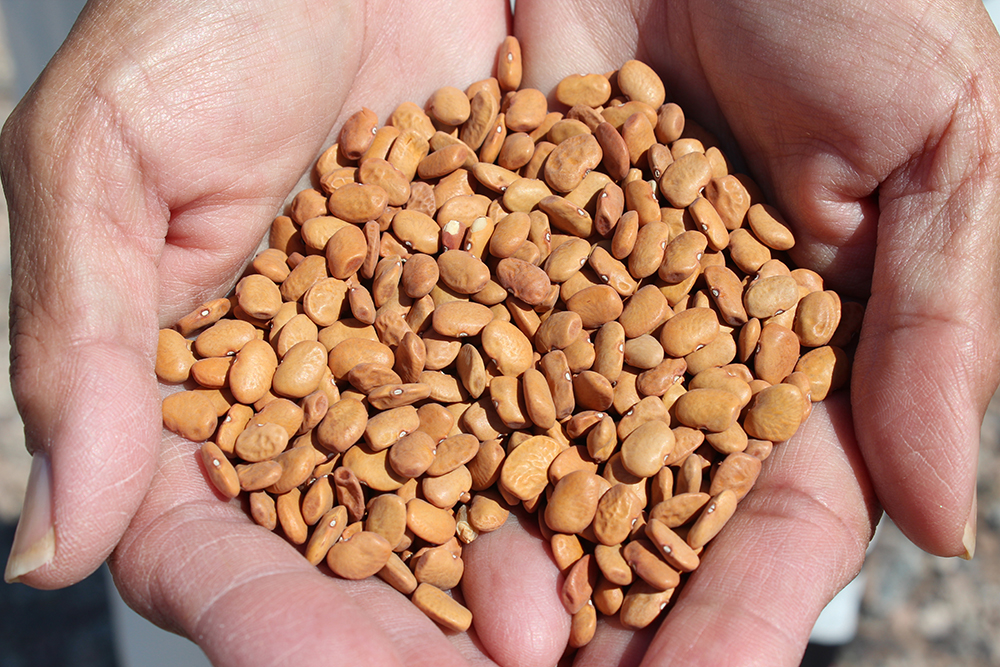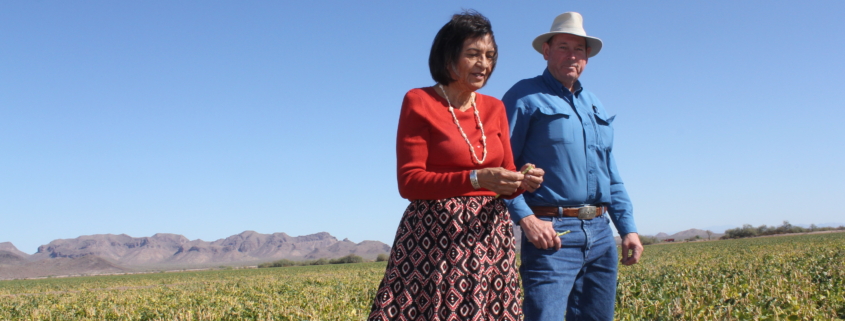Native American Heritage Month – A Nutrition Perspective & Recipe
By Maggie Hensley, RD | Registered Dietitian
NOAH acknowledges with respect, that the physical locations of NOAH’S programs are within the ancestral homelands of Native American tribes that have sustained connections to its lands and waters, including the Akimel O’odham (Pima), Pee Posh (Maricopa), and Tohono O’odham peoples. Thousands of years ago they settled around the Gila River and built a complex maze-like network of canals. This made it possible for them to grow crops in the middle of the Sonoran Desert. The traditional crops they grew included: cotton, melons, tobacco, and fruit. But most important were “The Three Sisters” of corn, squash (pumpkin), and beans.
The Three Sisters

The Three Sisters were grown in an ingenious farming practice of planting all three on a small hill very close together. The corn stalks provide a ladder that the beans can grow upward on. The beans in turn give stability to the corn stalks during high winds. The leaves of the squash keep the soil cool and damp in the hot sun.
Just like they grow better together, they are also better eaten together. For example, there are proteins that our bodies need, but we must get them from our food because our bodies don’t make these types of proteins. When the corn and beans are eaten together, they are a “complete” protein.
All three staples – corn, beans, and squash – also provide fiber. The fiber is great for heart health and blood sugar management. The three sisters also have good fats (especially pumpkin seeds), and a lot of vitamins and minerals!
The Bavi Bean
One bean, the bavi, or tepary bean, has been growing here for over 5,000 years. They are higher in protein and iron than kidney, navy, or pinto beans. They are one of the most heat tolerant beans in the world, which makes them ideal for growing in desert conditions.
The Akimel O’odham use tepary beans to make a dish called poshol. Poshol is a traditional soup that has beans, corn, wheat berries, and a variety of vegetables. Celebrate Native American Heritage month by enjoying some traditional poshol and learning about the Native cultures and history in our community. For more information on the Tribal communities in the greater Phoenix area please check out the Gila River Indian Community, the Tohono O’odham Nation, the Salt River Indian Community, and the Ak-Chin Indian Community. To learn more about Indigenous cultures throughout Arizona please see the Inter-Tribal Council of Arizona.
Traditional Poshol by Ramona Farms
Ramona Farms, a more than 4,000-acre farm in the Gila River Indian Community in Sacaton, AZ, began in the 1970s when Ramona and her husband Terry began farming the 10-acre allotment her parents had farmed. Their farm grew and with the support from the community, and Ramona’s father’s wishes for his daughter and the land, they slowly began farming the nearly extinct bavi beans. Today Ramona Farms bavi beans and other products are available to purchase at local stores throughout Arizona, through their online store, and in countless dishes as restaurants around the country.
Enjoy a delicious meal featuring two of The Three Sisters. The traditional Poshol recipe is equally delicious and nutritious, and it features Ramona Farms bavi beans.
To learn more about NOAH’s nutrition services, visit NOAHhelps.org/nutrition/services.






